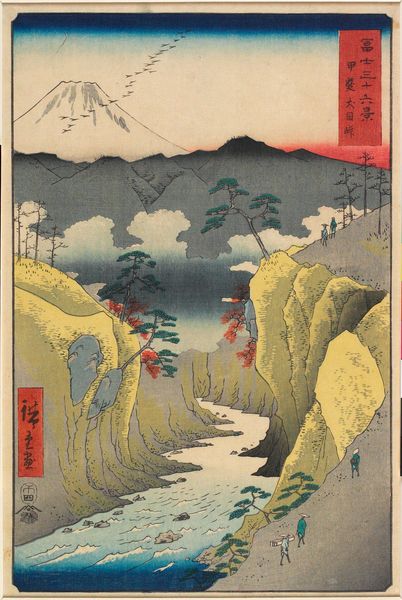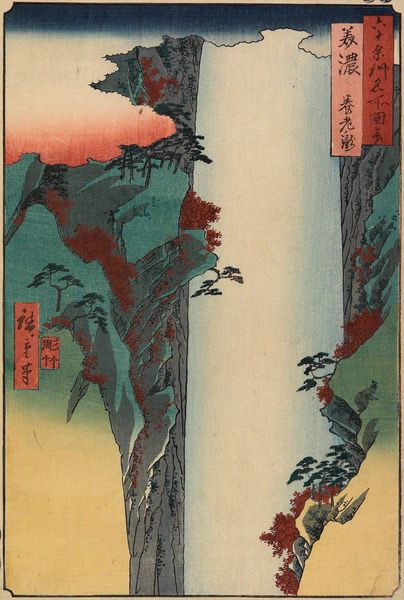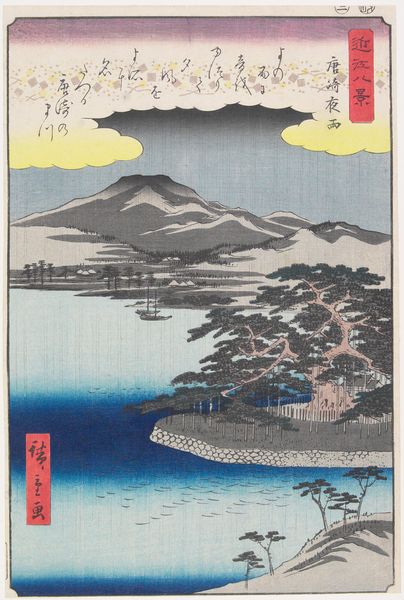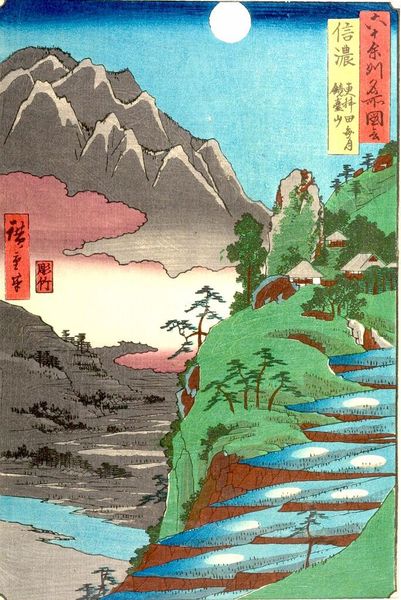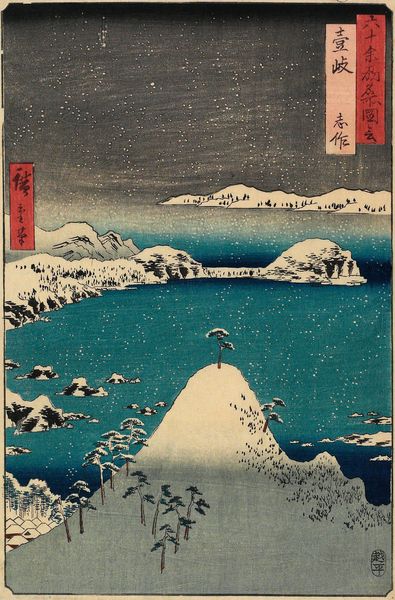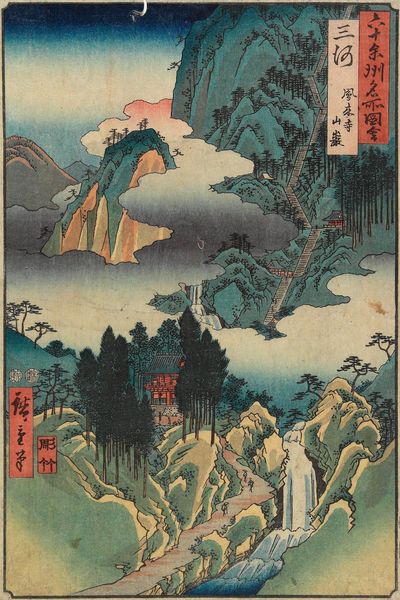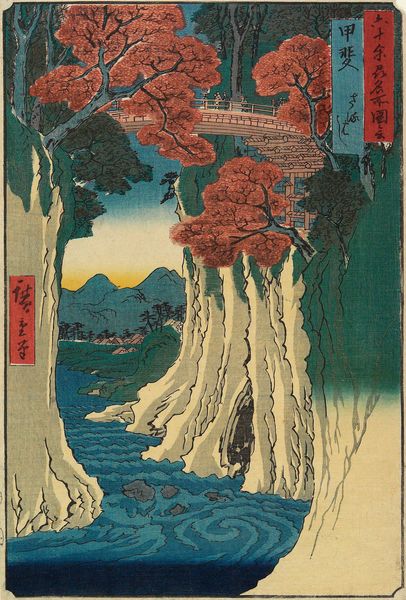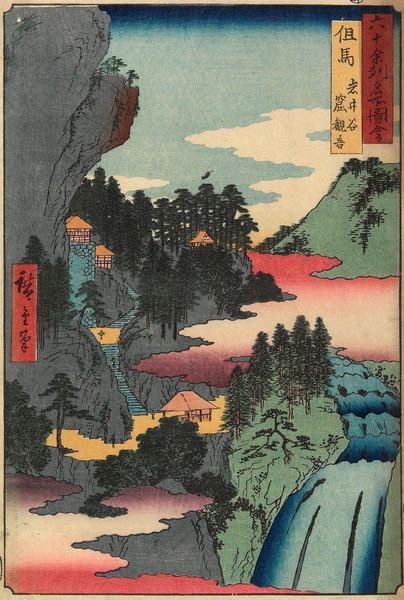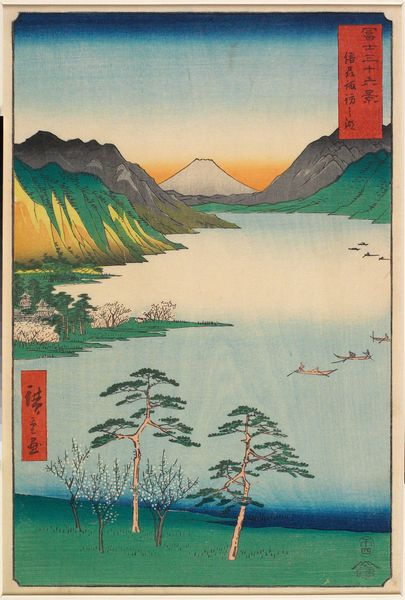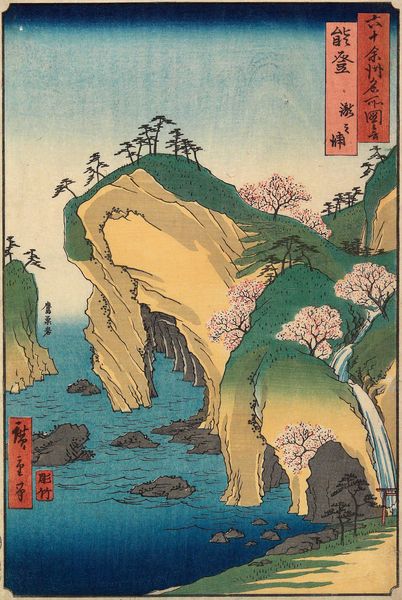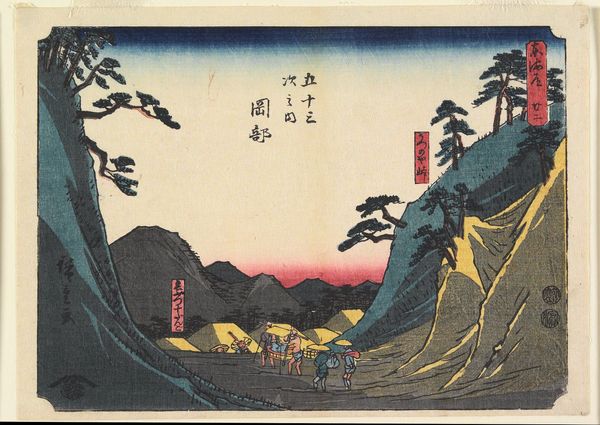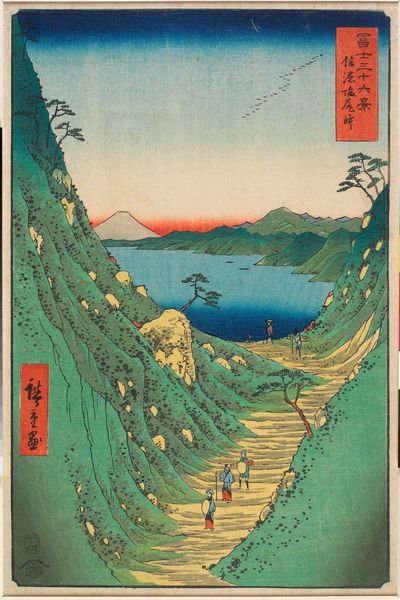
Moon Reflections on Rice Paddys at the foot of Kyōdai Mountain Possibly 1853 - 1857
0:00
0:00
print, ink, woodblock-print
# print
#
landscape
#
ukiyo-e
#
japan
#
mural art
#
ink
#
woodblock-print
#
orientalism
#
watercolor
Dimensions: 13 9/16 × 8 3/4 in. (34.4 × 22.3 cm) (image, vertical ōban)
Copyright: Public Domain
Curator: This artwork, housed here at the Minneapolis Institute of Art, is titled "Moon Reflections on Rice Paddys at the foot of Kyōdai Mountain." It's a woodblock print created by Utagawa Hiroshige, likely between 1853 and 1857. Editor: What strikes me immediately is how tranquil yet spatially complex the composition is. The way Hiroshige manipulates perspective and scale—the mountains looming in the background against the delicate reflections in the paddies—it’s quite compelling. Curator: The "Sixty-odd Provinces" series to which this print belongs was immensely popular because it captured regional identity at a time when Japan was undergoing massive change. The choice of the Kyōdai mountain setting roots it in place, offering a recognizable symbol of Shinano Province, today’s Nagano Prefecture. Editor: And what a setting it is! The diagonal arrangement of the rice paddies draws your eye upward, creating this layered effect where each level catches a different glint of moonlight. The gradations in the blue of the night sky, against those vibrant pink clouds… it’s remarkably balanced, yet the emotional tonality hints at impending change or fleeting beauty. Curator: Woodblock printing as a medium allowed for wider distribution, fostering a shared cultural experience across different social classes. Think about it: for many, this print may have been the closest they got to experiencing this specific landscape. It reinforced a sense of belonging and a shared understanding of what it meant to be Japanese. Editor: True. It makes one ponder on the idea of ownership versus access to landscape – and how visual representations alter our perception. In the print, the bold outlines contrast with the softness of the gradations in tone, giving us a carefully staged yet evocative snapshot. The use of color itself is structurally significant to orient us as viewers. Curator: I’d also like to note that ukiyo-e prints played a critical role in shaping Western perceptions of Japan during the late 19th century, significantly shaping Japonisme. This aesthetic captured a pivotal point in global cultural exchange, as prints were often used for trade, expositions, and cultural education programs abroad. Editor: Absolutely. Reflecting on it all, there’s this interplay between surface appearance and symbolic depth that makes it engaging even now. We're not just seeing a pretty scene; it's carefully calibrated in terms of color, structure, and its capacity to convey deep emotion within very defined constraints. Curator: Indeed, by intertwining artistic vision and socio-cultural realities, this print provides an interesting framework into how landscape can define our individual and collective identities.
Comments
minneapolisinstituteofart almost 2 years ago
⋮
Between 1853 and 1856, Hiroshige designed sixty-nine prints inspired by famous views in each of sixty-six provinces that comprised the island of Honshu (plus additional prints for the islands of Shikoku and Kyushu and the city of Edo). The view of the moon rising from behind Mt. Kyōdai was made famous as early as the 10th century when a verse about it was included in the imperial poetry anthology Kokinwakashu. Hiroshige was probably also aware of the famous itinerate poet Matsuo Bashō's account of his trip to Sarashina where he observed the moon from Mt. Obasute and where he heard a legend of an old woman abandoned in the mountains to die with the moon as her only companion. Here, Hiroshige cleverly captured the unusual site of the full moon reflected repeatedly in the terraced fields at the foot of Mt. Kyōdai as seen from Mt. Obasute.
Join the conversation
Join millions of artists and users on Artera today and experience the ultimate creative platform.
